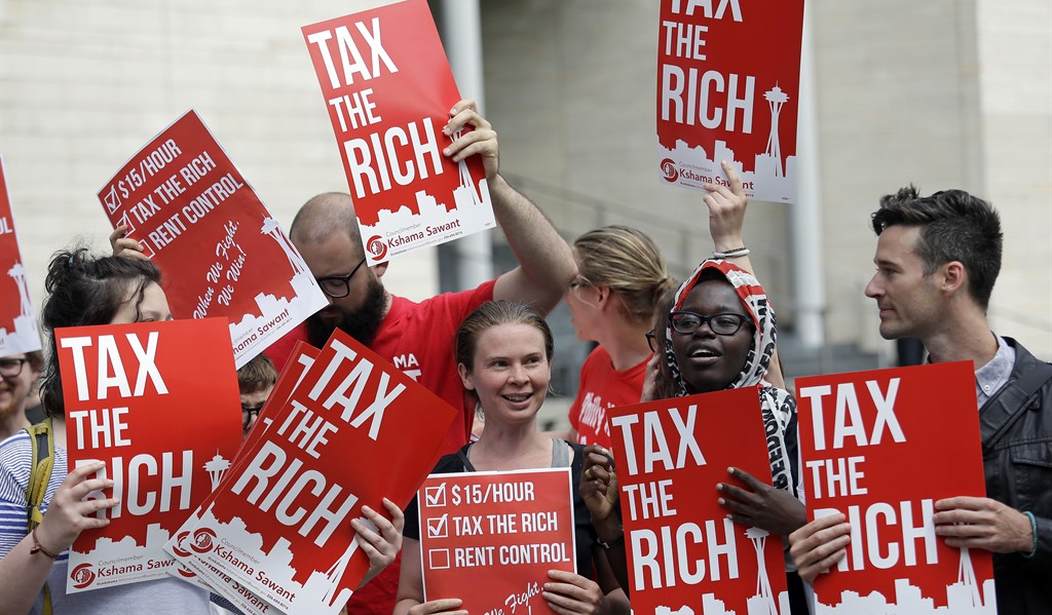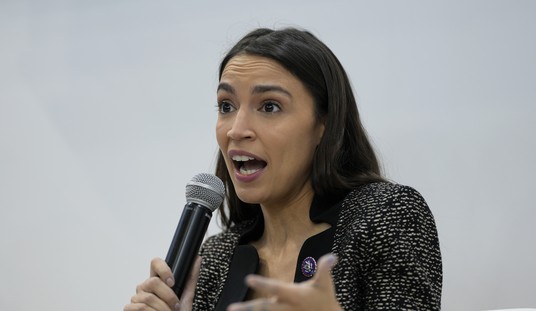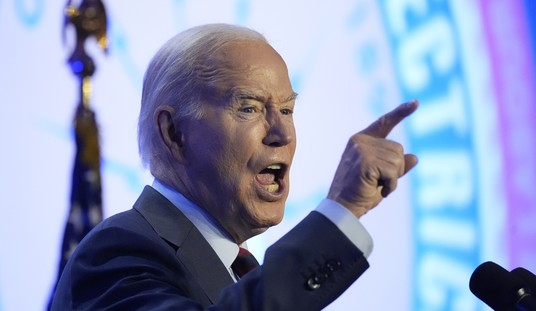From coast to coast, Democrats are attacking Republicans on tax policy in negative ads -- endlessly repeating the claim that within the (exclusively) GOP-passed, pro-growth tax reform law, 83 percent of the individual tax relief benefits supposedly flow to the top one percent of wage earners. Several fact-checkers have examined this assertion, concluding that it's deeply misleading. Here's why:
Democrats already have a well-worn, and misleading, talking point about it: 83 percent of the tax cuts go to the wealthiest 1 percent. That’s true for 2027 but only because most of the individual income tax changes expire by then...The important missing context is that the final tax legislation, which President Donald Trump signed into law Dec. 22, allows most of its individual income tax provisions to expire by 2027, making the tax benefit distribution more lopsided for the top 1 percent than in earlier years. In 2018, according to an analysis by the Tax Policy Center, the top 1 percent of income earners would glean 20.5 percent of the tax cut benefits — a sizable chunk, but far less than the figure that’s preferred by Democrats. And in 2025, that percentage would be 25.3 percent, with the top 1 percent (those earning above $837,800) getting an average tax cut of $61,090. Just two years later, in 2027, the percentage of tax benefits to this income group jumps to 82.8 percent, “because almost all individual income tax provisions would sunset after 2025,” explains TPC.
The "83 percent" statistic ignores the current duration of the tax cut, under which the vast majority of American families, across all five income groups, are enjoying a reduction in their tax burdens. In order to advance this talking point, Democrats pretend that the years 2018-2026 do not exist, jumping ahead to a hypothetical future in which the individual tax rates sunset. As we've argued throughout the debate over the tax law, it is virtually inconceivable that any Congress would allow a massive middle class tax hike occur before 2027, based on the relevant political incentives and recent history. Interestingly, almost all of the House Democrats who have been beating this drum -- which includes the frequent complaint that the corporate tax cuts were permanent, whereas the middle class tax cuts were temporary -- voted against the House-passed bill in late September to...permanently extend the middle class tax cuts:
Recommended
The House on Friday voted to permanently extend the individual tax cuts in President Trump’s 2017 tax law, giving House Republicans a chance to tout the law as they prepare to leave Washington to campaign. The legislation passed on a vote of 220-191. Three Democrats voted for the legislation and ten Republicans voted against it. Two of the Democrats who voted for the bill, Reps. Jacky Rosen (Nev.) and Kyrsten Sinema (Ariz.), are both running for Senate. Rep. Conor Lamb (Pa.) is in a competitive race against Rep. Keith Rothfus (R) in the newly drawn 17th District of Pennsylvania...House Republicans, with the support of Trump, want to make the tax cuts permanent both because they think it’s good policy and because they think it will benefit them politically. They see it as a way to highlight strong economic numbers and to force Democrats to go on the record about extending tax provisions that benefit middle-class taxpayers.
A handful of blue state Republicans voted against the extension, citing the law's provision that reduces federal tax subsidies for wealthy residents of high-tax states (in the form of curbing state and local deductions). Only three Democrats voted in favor of an indefinite extension of the middle class tax cut, all three of whom are locked in tough election contests. So after running countless ads savaging Republicans for declining to make middle class tax relief permanent, and regurgitating the misleading '83 percent' line (which relies on the 2027 expiration date), nearly every House Democrats opposed a bill that would have rendered these criticisms obsolete. Every single Democrat in Congress voted against the succeeding tax law, which enjoys plurality (+8) support among the electorate. But let's revisit some of the statistics mentioned in the fact check analysis showcased above. Under the new taxation regime, the top one percent of US wage earners will receive just over 20 percent of the individual tax cuts. That's not even close to 83 percent, of course, but it still may look disproportionally high to some. In reality, it's not:
Top 3% of U.S. taxpayers paid majority of income taxes in 2016 https://t.co/8Spvr9MsFS via @business Why the rich also get seemingly bigger cuts
— Neal McCluskey (@NealMcCluskey) October 22, 2018
"Fair Share" update: In 2016, the top 5% of US wage earners paid more than 58% of the *entire* federal income tax bill, vastly outpacing their total share of adjusted gross income. https://t.co/CbzY9ilqr9 pic.twitter.com/XQSfwYtEN4
— Guy Benson (@guypbenson) October 22, 2018
The much-maligned top one percent paid more than 37 percent of all federal income taxes that year, which is the most recent on record for which we have data. The top three percent footed just over half of the total federal income tax bill. And those in the top five percent were responsible for paying nearly 60 cents of every federal income tax dollar collected by Uncle Sam. If you look at the black lines on the bar graph above, you will see that the federal income tax share paid by "the rich" far outpaced their respective portions of the nation's overall earnings. The bottom half of US earners -- 50 percent of the country -- paid approximately three percent of all federal income taxes in 2016, slightly less than the contributions of the top .001 percent alone. The Left's political stories about "fair shares" and "millionaires and billionaires" may pack a potent rhetorical punch in the service of fueling grievance politics and class warfare, but they're not grounded in facts and omit crucial perspective. It's worth noting that in the latest NBC/WSJ poll, the GOP holds a record-high 15 point lead over Democrats on the economy.
Parting thought: How can nearly every Democratic member of the House of Representatives defend their decision to march with Nancy Pelosi against solidifying the GOP's middle class tax cuts? And before you say "deficits," I'll remind you that Democrats couldn't even be bothered to pretend to care about that issue when President Obama was racking up national debt at an unprecedented rate, demagoguing Republican policy prescriptions along the way. I'll also remind you that we have a federal spending problem, not a revenue problem.

























Join the conversation as a VIP Member